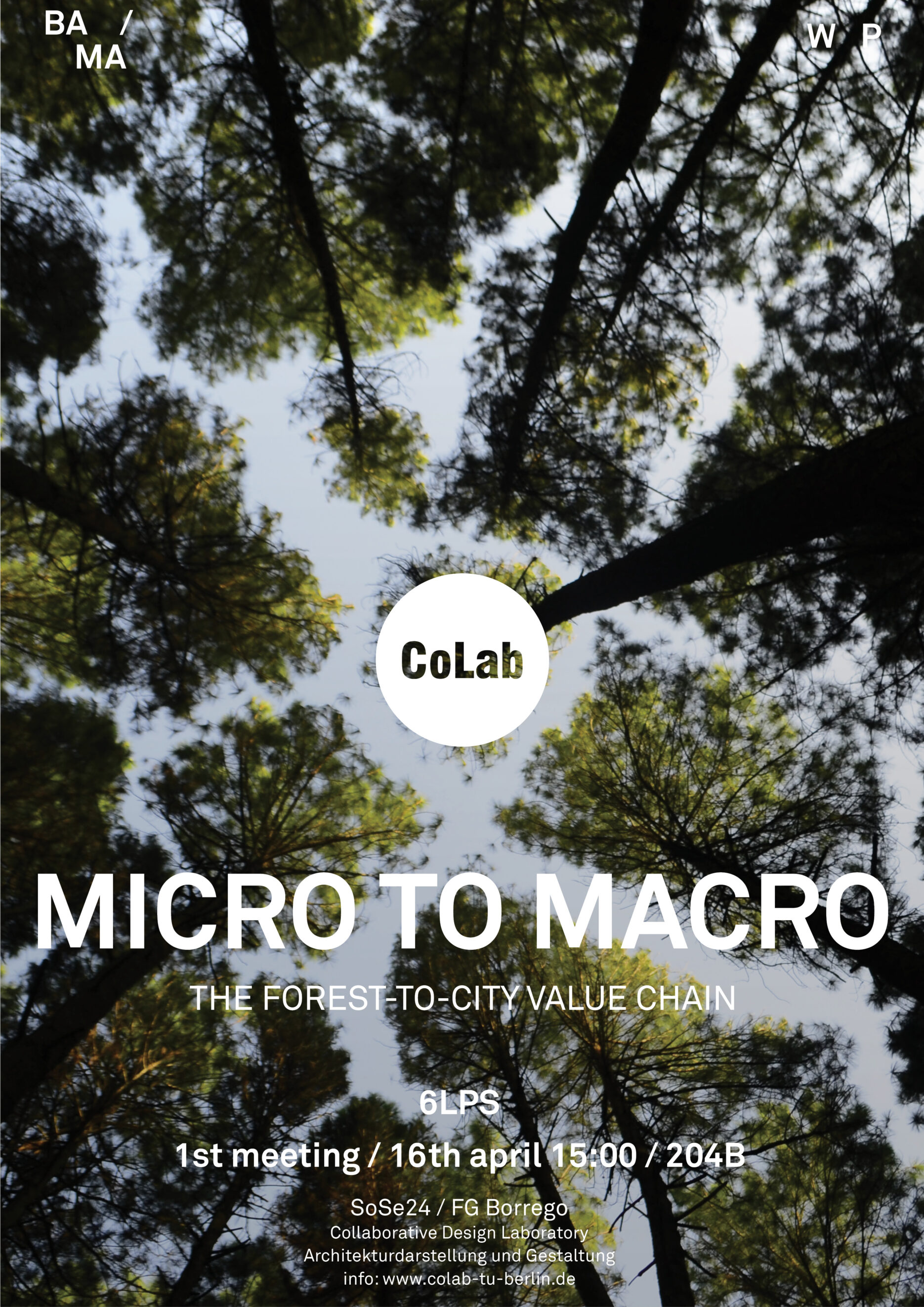How can complex, multi-scale,
multi-topic processes
be digitally modeled?
Could our cities take the leap
from big carbon emitters to massive
carbon sinkers in the near future?
The role of urban agglomerations and their material composition
has historically disregarded the symbiotic relationships innate to
the realm of natural environments and their inhabitants.
A logic of extracting and plundering resources from the planet
has been well established since the industrial revolution and
persists as the mainstream praxis well into our days. The process
of traditional city-making takes valuable raw materials from the
earth to return useless waste and vast amounts of atmospheric
pollutants.
The time has come to explore new ways of conceiving our built
environment, nature-based Value Chains (VC) need to start
substituting mineral and metal intensive standards in order to
invert the trend from greenhouse gas (GHG) emission to their
sinking and storage.
Could this actually be done? Are we still in time? The answer is up to us.
The amount of exchanges, transformations, flows and stakeholders that take part in a single material´s value chain is far more complex than what we perceive in our daily consumer experience. It comes as no surprise then, that its mapping and digital reproduction represents a significant challenge in itself. Furthermore, the ambition to actually redirect and strategically redesign one towards the sustainable use of nature-based materials certainly raises a few eyebrows.Over the last 4 years, several projects from inside IFA originated at the former Chair CHORA Conscious City under Prof. RaoulBunschoten, together with Fraunhofer IPK and other researchand industrial partners to create the Forest-to-City Value Chainconcept, and configure the, legally established, Bauhutte 4.0foundation.At its core, a Value Chain Model, has been created in previous iterations of this very seminar, and is now ready to begin a new cycle of update, and optimization.The coupling of GIS technologies (both traditional and web-based)with BIM modeling, LCA calculations and Business Intelligence software will allow us to explore and understand the complex relationships between all of the agents in the VC, and track its environmental impacts along the entire life cycle of an architectural project.The goal of this research is two-fold, spanning from sustainable agro-forestry all the way to building-systems and prefabrication-compatible architectural design, however, instead of a conventional morphology-focused approach, we will join the ongoing spatial-data-science revolution to develop a contemporary, information-driven design methodology.
